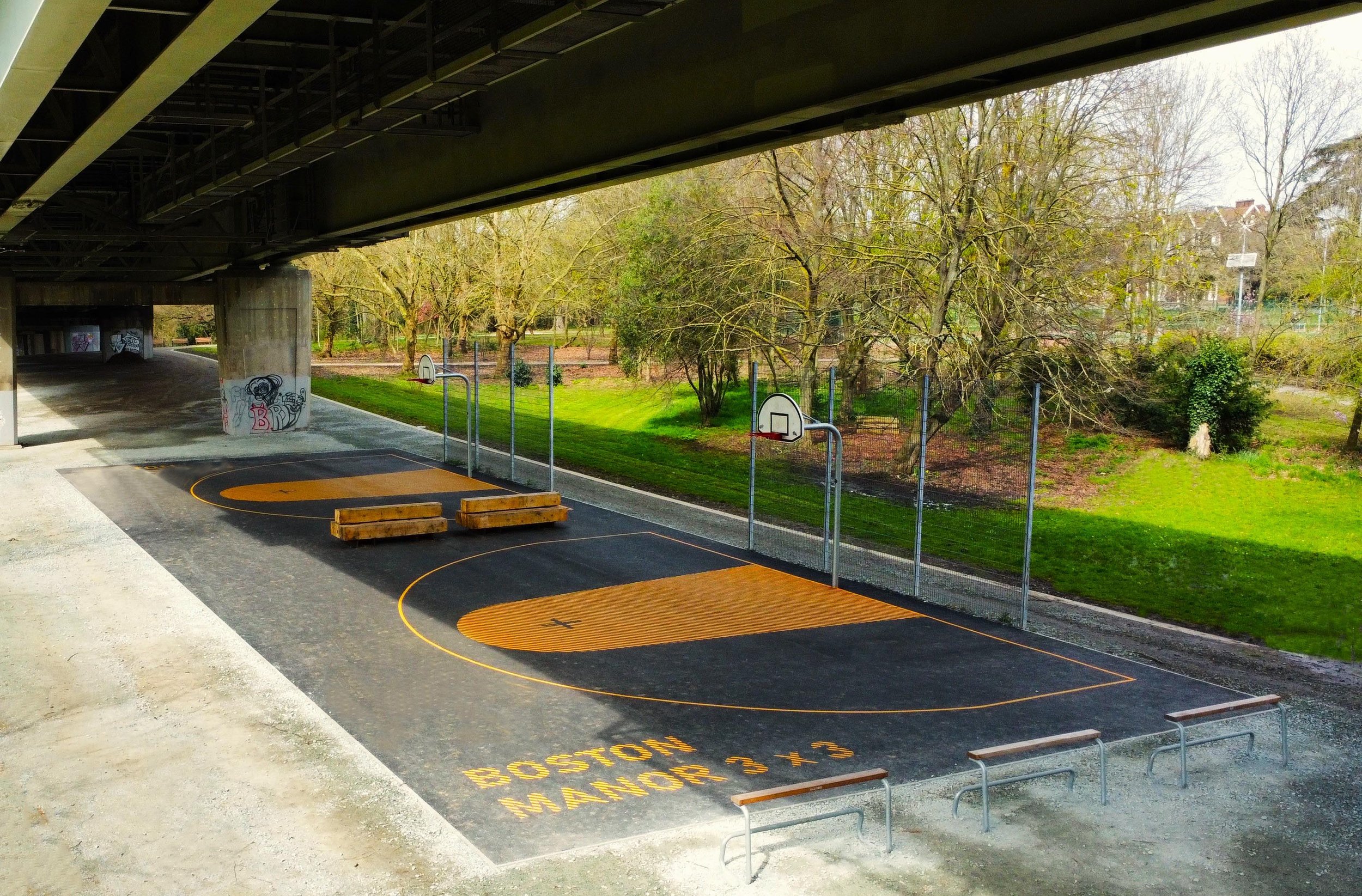Boston Manor Park
Client: London Borough of Hounslow
Landscape Architect: Allen Scott Landscape Architects
Cost: £2.5m
Duration: 15 months
Location: Brentford
Boston Manor Park is Brentford’s largest public open space, a Conservation Area and SINC (Site of Importance for Nature Conservation). Purchased by Brentford Urban District Council in 1924, the park is one of the London Borough of Hounslow’s most cherished spaces; of great value and significance, owing to its historic Grade I listed Jacobean house, community facilities and the landscape in which it is set.
Over the years, several challenges emerged which meant that the park had become severely underused due to lack of facilities and activities. Additionally, overgrowth in parts meant that biodiversity was being limited, visitors felt unsafe and areas by the river and woodland were becoming inaccessible.
The Reconnecting Boston Manor Park Project, funded by The National Lottery Heritage Fund, The National Lottery Community Fund and the London Borough of Hounslow has allowed some of these long-standing problems to be addressed and secured the future of the park.
The overall vision was to transform Boston Manor Park into a vibrant asset that reflected the needs of the community and reconnected it to nature, to its history, to its immediate locality and to the people who live and work around and nearby.
Appointed by the London Borough of Hounslow as specialist landscape contractors, Blakedown Landscapes’ remit was to supply and deliver the landscape masterplan.
Operating in a ‘live’ park environment, the delivery of the works was approached in a sectional manner for the most part, with each area isolated from public access whilst maintaining the freedom of the public to use the remaining destinations. Flexible working and rationalisation of the programme also came into play due to unavoidable changes to the café build schedule.
Clear communication channels and best working practices were adopted with other contractors concurrently on site ensuring works were undertaken effectively and to time and budget.
WORKS
Works included:
Site-wide installation of new paths and the upgrade of the existing path infrastructure, which included reclaimed granite sett thresholds
A new pedestrian access
The woodland area:
Enhancement of entrances and re-alignment of the existing nature trail
Installation of a timber boardwalk
Habitat creation projects - deadwood and brash piles, beetle pyramids and hibernaculum for amphibians and reptiles .
Lake restoration:
Dredging and de-silting, with all silt placed to the extremities and re-used to re-form the lake boundaries. In total, 98% of all site-wide soils and silt were re-used
Re-profiling
Construction of oak revetments to stabilise the banks and placement of ragstone to help waterfowl access the islands for refuge
Installation of a boardwalk and dipping platform
Marginal aquatic and lily planting to enhance biodiversity
Walled Garden:
Upgrading of York stone and brick-paved paths
Relocation of the drinking fountain to allow the lawn to be opened up for events and access improved
Planting of espalier fruit trees to screen views from adjacent properties and pleached limes trained to the boundary walls
Installation of two half-court basketball courts
Boston Manor Park House:
New planting to the boundaries
Rationalisation of oval lawn and drive layout
Restoration of the Yorkstone flag apron
Repair and resurfacing of paths
FURTHER INFORMATION
Across the park, nearly 200 trees have been planted all chosen for their shape, form and continuity, depending upon their designated character areas.
Planting has been contract grown by Greenwood Plants and chosen to increase diversity, with planting beds being enlarged and filled with ebullient herbaceous mixes. Across Boston Manor Park, this has included habitat enhancements to the woodland, improvements to the grassland meadow and ornamental planting to the Walled Garden and parkland.
Reconnecting Boston Manor Park has restored and unlocked the heritage of the site; maximised its incredible biodiversity; capitalised on the site’s pivotal location; improved health and wellbeing; helped to reverse social deprivation; and ensured that the park thrives for the next 100 years.








